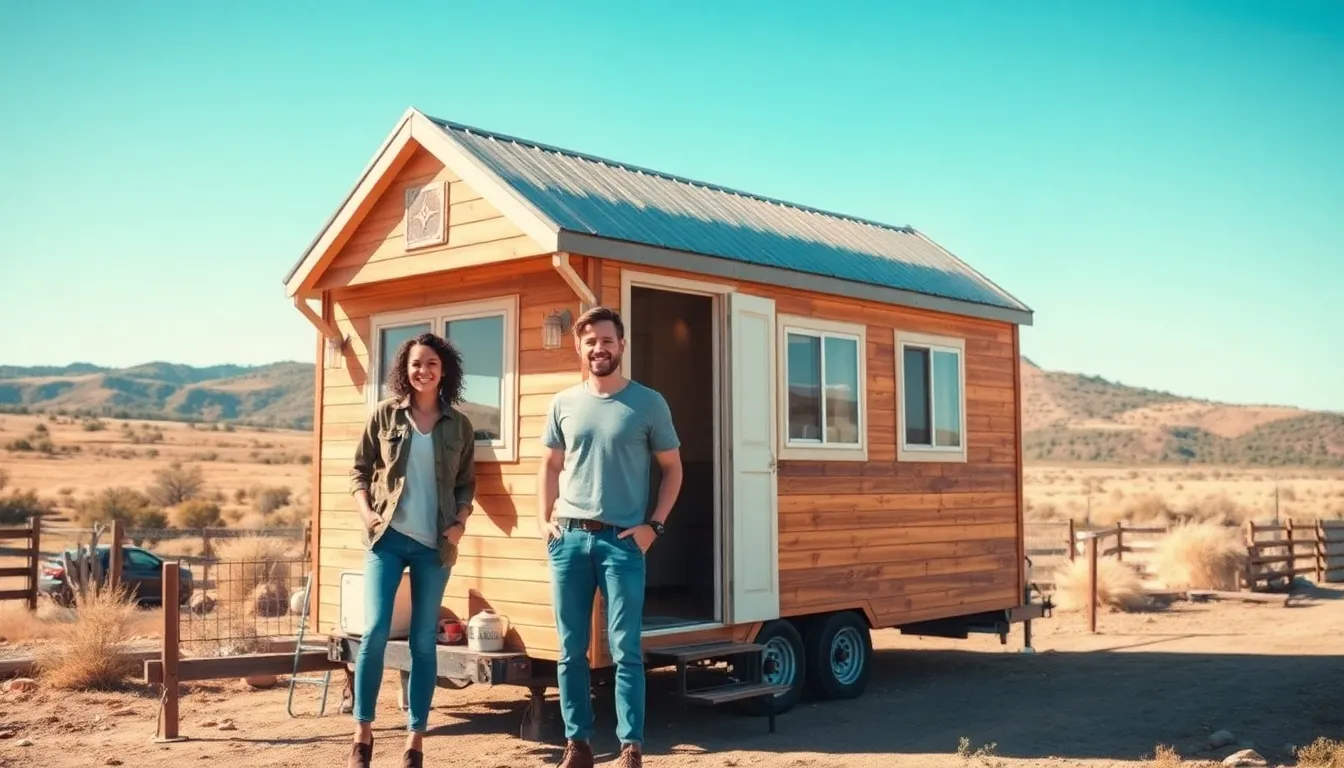In a world where bigger often seems better, tiny homes are flipping the script, proving that less really can be more. Imagine living in a cozy, minimalist space that you can take with you wherever you go. Tiny home transport isn’t just about moving a structure; it’s about embracing a lifestyle that values freedom, adventure, and a sprinkle of whimsy.
But how does one transport these pint-sized palaces? It’s not as simple as hitching it to a truck and hoping for the best. From choosing the right vehicle to navigating the open road, the journey of tiny home transport is packed with surprises and a few chuckles. Get ready to explore the ins and outs of moving your tiny abode, and discover why this quirky trend is capturing hearts and imaginations everywhere. After all, who wouldn’t want to take their home on the road?
Table of Contents
ToggleOverview of Tiny Home Transport
Transporting tiny homes involves several critical factors that ensure safety and compliance. Tiny homes often weigh between 5,000 and 12,000 pounds depending on their size and materials used. Size must be taken into account when planning the transportation.
Legal regulations vary by state, impacting the ability to move these homes on public roads. Permits and inspections are common requirements, and understanding each jurisdiction’s rules is necessary. Adequate planning can avoid fines and unexpected delays.
Choosing the right vehicle is essential, as most tiny homes require a specialized trailer for transport. The vehicle must provide sufficient towing capacity, necessitating careful selection to match the tiny home’s weight specifications.
Weather conditions can pose significant challenges for transportation. Rain, snow, or high winds may impact visibility and road safety. Planning transport during favorable conditions improves overall safety and efficiency.
Navigating tight spaces presents additional obstacles. Tiny homes might need to maneuver through narrow roads, driveways, or congested areas. Skilled drivers often use a combination of techniques to ensure safe passage in such situations.
Finally, securing belongings inside the tiny home is crucial before transport. Loose items could shift during transit, potentially causing damage. Proper securing techniques help maintain stability throughout the journey.
Benefits of Tiny Home Transport

Transporting tiny homes offers numerous benefits that align with a minimalist lifestyle. The advantages include affordability, cost savings, flexibility, and mobility.
Affordability and Cost Savings
Tiny home transport often results in significant financial advantages. Considering the lower overall costs of tiny homes compared to traditional houses, moving them can lead to lower expenses. Many tiny home owners save on utility bills, taxes, and maintenance costs. Transporting the home allows them to relocate for job opportunities or lifestyle changes without incurring hefty fees associated with traditional real estate transactions. The savings extend to the use of less fuel and smaller vehicles, further reducing transportation costs.
Flexibility and Mobility
The flexibility and mobility of tiny homes set them apart from conventional housing. Tiny homes on wheels enable owners to relocate easily, exploring new areas without the commitment of a permanent move. Transitioning from one location to another can occur seasonally or strategically, adapting to job demands or personal preferences. With the ability to park in various settings, individuals experience diverse environments while maintaining their home. This adaptability fosters a sense of adventure that appeals to many who favor a minimalist lifestyle.
Challenges in Tiny Home Transport
Transporting tiny homes presents various challenges that require careful consideration. Not just about getting from point A to B, it involves navigating specific regulations and logistical hurdles.
Weight and Size Regulations
Weight limits typically range from 5,000 to 12,000 pounds for tiny homes. Many states enforce strict transport regulations, influencing both weight and size. Compliance with these laws ensures safe travel and prevents legal issues. Permits may be necessary for oversized loads, impacting transportation costs and timelines. Understanding weight distribution also contributes to safe towing practices, affecting handling and stability on the road.
Logistics and Planning
Logistical planning greatly influences tiny home transport success. Routes must account for height restrictions, narrow roads, and potential obstacles. Ensuring a proper vehicle with the capacity to handle the tiny home is essential, as inadequate towing can lead to issues on the road. Scheduling transport during favorable weather conditions enhances safety and mitigates risks. Organizing timelines to allow for inspections and permits is crucial for avoiding delays and ensuring compliance. Attention to these details fosters a smoother transport experience.
Best Practices for Transporting Tiny Homes
Transporting tiny homes involves strategic planning and execution to ensure safety and compliance. Adhering to best practices can make a significant difference during the moving process.
Preparation for Transport
Preparation plays a vital role in the transport process of tiny homes. Begin by checking local regulations and securing necessary permits. Measurements of the tiny home help identify any restrictions on height or width during transit. Inspecting the home for loose items or potential hazards ensures belongings remain secured. Trailer connections require thorough checks for compatibility and proper fit. Lastly, establishing a timeline for inspections eliminates last-minute rushes, contributing to a smoother transport experience.
Choosing the Right Vehicle and Equipment
Choosing the correct vehicle and equipment directly impacts the transport efficiency of tiny homes. Opt for a vehicle designed specifically for towing, with adequate capacity to handle weights between 5,000 and 12,000 pounds. Truck options typically include heavy-duty pickups or specialized towing vehicles. Consider a trailer with an adjustable hitch to facilitate easy attachment. Proper brake systems on both the vehicle and trailer provide essential safety during transport. Additionally, equipping the trailer with stabilizing blocks and safety chains enhances stability on the road.
Transporting a tiny home is more than just a move; it’s an adventure that embodies the spirit of minimalism. With careful planning and attention to detail, owners can navigate the challenges that come with relocating their homes. Understanding regulations and ensuring proper vehicle and trailer selection are vital steps for a successful journey.
The freedom and flexibility that tiny homes offer make the effort worthwhile. As this lifestyle continues to gain popularity, embracing the transport process will only enhance the experiences of those seeking a simpler way of living. By prioritizing safety and compliance, tiny home owners can enjoy the journey as much as the destination.






